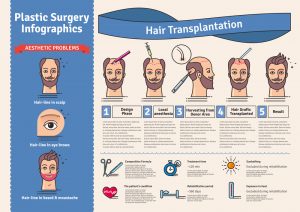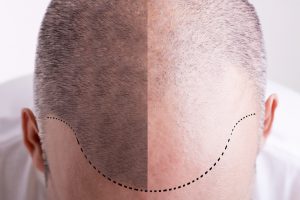 FUT, FUE, DHI, Sapphire, Strip, Slit, Percutaneous, Channel? What are they, and which should you choose? A hair transplant Turkey gives you all these options initially. Much of the literature available today will tell you that there are two commonly used surgical hair transplant procedures today – FUE (Follicular Unit Extraction) and its derivatives, and FUT (Follicular Unit Transplant). However, the term Follicular Unit Transplant was originally coined to describe the process of transplanting entire follicular units. The method of harvesting the follicles at the time was by strip and this method is still used in some situations.
FUT, FUE, DHI, Sapphire, Strip, Slit, Percutaneous, Channel? What are they, and which should you choose? A hair transplant Turkey gives you all these options initially. Much of the literature available today will tell you that there are two commonly used surgical hair transplant procedures today – FUE (Follicular Unit Extraction) and its derivatives, and FUT (Follicular Unit Transplant). However, the term Follicular Unit Transplant was originally coined to describe the process of transplanting entire follicular units. The method of harvesting the follicles at the time was by strip and this method is still used in some situations.
Since FUT was first developed, newer and less invasive harvesting methods have evolved, notably follicular unit extraction. The overall procedure though still involves transplanting entire follicular units. It’s just the method of harvesting the follicles that differs. For this reason you’ll find some texts that refer to strip and FUE as being 2 methods of harvesting hair follicles for follicular unit transplants. Technically, they’re correct!
Today though, FUE is widely regarded as being a hair transplant method in its own right. This is possibly because newer less invasive methods of implanting specifically FUE harvested follicles have evolved so it’s more convenient to think of the entire procedure as its own technique. Consequently, ‘FUT’ as a name is now more commonly used to refer specifically to the procedure that uses the strip harvest method. Hence, you’ll often find them listed as 2 distinct procedures when in reality they’re similar in all respects bar harvest method.
Hair Transplant Procedures – Follicular Unit Extraction (FUE)
FUE is classed as a minimally invasive procedure. It’s done under local anaesthesia, which is applied to both the donor and recipient sites just prior to each part of the procedure. In FUE, individual hair follicle units (grafts) are carefully isolated from the surrounding scalp, usually in the nape region, and extracted with forceps for transplant into the recipient area.
Early FUE procedures used a manual micro punch to isolate the follicles before extracting them. The micro punch leaves micro sized holes that very quickly heal over, leaving virtually no visible scarring. However, as with most things medical related, science and technology are constantly developing newer, more effective ways of performing procedures.
Today, many hair transplant clinics use a micro-motor driven needle instead of the manual punch needle. It’s faster, automated, less invasive, and allows the surgeon to extract (and thus transplant) a lot more hairs in a single session. According to most reports, the difference is anywhere from 1,000 to 1,500 grafts with the manual system versus 2,500 or more in the same time frame with the micro-motorised procedure. For patients requiring a large number of grafts, this significantly reduces the number of sessions required, and thus the total cost of the procedure. Furthermore, in skilled hands, using the appropriate sized needle and motor speed, extraction can be aligned precisely with the natural angle of each individual follicle unit and the unit extracted without leaving any scarring at all. And also without damaging the hair follicles themselves.
Note – some hair transplant clinics still offer clients a choice of either the manual or micro-motorised FUE procedure.
With both methods, the follicle units are placed into a preservative solution as they’re extracted. The follicles are then counted and sorted if necessary according to the number of hairs in each follicular unit. Usually, units with 1 or 2 hairs are preferred for the hairline whilst those with 3 or more hairs are better for the crown and back.
Then the first step in the implanting process – creating the recipient slits or channels, begins. As this is the most important part of the procedure, the hair transplant surgeon him or herself always performs it. Considerations like natural hair pattern and individual hair alignment must be factored in if a totally natural look is to be achieved.
FUE hair implantation methods – slit and channel (percutaneous)
 There are 2 implanting methods used for traditional FUE hair transplants – slit and channel. The slit method is the older of the two and involves making a small slit in the recipient scalp skin into which the harvested hair follicles are placed. Whilst it was an advance on previous methods of implanting, it’s now been superseded by an even more effective technique referred to as a percutaneous hair transplant, or a perkutan hair transplant.
There are 2 implanting methods used for traditional FUE hair transplants – slit and channel. The slit method is the older of the two and involves making a small slit in the recipient scalp skin into which the harvested hair follicles are placed. Whilst it was an advance on previous methods of implanting, it’s now been superseded by an even more effective technique referred to as a percutaneous hair transplant, or a perkutan hair transplant.
In a percutaneous transplant, small channels the same diameter and depth as the harvested hair follicle grafts are made in the recipient scalp skin. The grafts are then inserted neatly and snugly into these channels with forceps. A percutaneous transplant has many advantages over the slit transplant method.
- The surgeon can accurately align the channels the correct way to produce a more natural transplant result.
- Because the channels (holes) are the same diameter and depth as the graft plugs, the grafts slot into place snugly and are less prone to shifting or falling out.
- The channels are smaller and neater than slits, allowing more of them to be inserted into the same space of scalp to produce far better coverage or a smoother hairline.
- There is less chance of the channels transecting surrounding hair follicles.
- The channels can be cleverly inserted in and around existing hair follicles without damaging them to bulk out existing hair growth.
- Healing time is quicker because the channels are less invasive than slits.
- As the hair grafts fit snugly into the channels, there’s less opportunity for bacteria and germs to get into the transplant sites.
With both implanting methods the skin in the recipient area is first numbed so that the channels or slits can be made. The number of these corresponds to the number of grafts to be transplanted.
Hair Transplant Procedures – The Direct Hair Implant, or DHI hair transplant
Another variation of the FUE transplant is the Direct Hair Implant, or DHI hair transplant. This is the latest technique and involves the use of a special Choi implanting pen that simultaneously creates the implant channel and deposits the graft into it. Typically, the graft is also implanted within a few minutes of being collected from the donor region. In other words, the surgeon collects and implants as s/he goes rather than the procedure being split into a collection phase, a ‘channel cutting’ phase, and an implanting phase. For this reason, DHI transplants must be done by a trained, qualified surgeon. In other types of FUE hair transplants, the surgeon may only create the all-important implant channels and leave the actual implanting of the grafts to technicians.
Collection of the grafts in a DHI procedure is still performed in a similar way to other FUE techniques. A motor driven needle of less than 1mm in diameter isolates either individual hair follicles or follicle units from a shaved donor area at the back of the head, which are then extracted with forceps. The hair is subsequently transferred to the Choi implanter for immediate implant.
Like most procedures, there are both advantages and disadvantages to a DHI hair transplant.
- As the grafts are implanted immediately, it reduces the risk of hair roots dying.
- Post surgery recovery time is very fast.
- Pain and discomfort are negligible.
- The simultaneous channelling and implanting combines 2 phases of a traditional FUE procedure, thus reducing the overall time of the surgery.
- DHI implants can be done without having to shave or cut the recipient areas. For this reason they’re popular with female hair transplant patients.
- The Choi implant pen creates very narrow hair follicle width channels that minimise bleeding, an important consideration for patients with bleeding disorders.
- The very narrow channels also reduce the risk of infection.
- There is virtually no scarring from the tiny channels.
- The surgeon can implant hairs without damaging surrounding follicles.
- Denser and more natural looking transplants can be achieved courtesy of being able to create more channels per square centimetre of scalp. Notably, a very natural hairline can be created.
- The Choi implanter allows very accurate channel angles and hair placement to be achieved.
One of the main disadvantages of a DHI hair transplant is that it’s more expensive than other FUE procedures for several reasons:
- The Choi implanter is expensive
- The hair transplant surgeon needs to perform the implanting procedure, and their time is invariably more expensive than a technicians’.
- Because the grafts need to be transplanted immediately, a bigger medical team is usually required.
The implanting phase of the process takes longer as well because the surgeon is both creating the channels and implanting the hair. However, this is offset by the overall reduction in time.
Hair Transplant Procedures – Follicular Unit Transplant
Today a FUT hair transplant usually refers to the procedure that uses the strip harvest method. This involves the surgeon removing a thin strip or strips of skin containing numerous hair follicle units from the donor area. The strip of skin is then placed in a saline or preservative solution and dissected into its individual hair follicle units. As with FUE extracted follicle units, these units are subsequently transplanted into carefully aligned slits or channels in the recipient region that have been made by the surgeon.
The incisions in the donor area are stitched or stapled closed and typically the patient needs to return to have these removed after a certain period of time. Although its more invasive than FUE harvest methods, a strip harvest does have its advantages, notably:
- More hair follicle units can be collected from a smaller donor area, a consideration for patients with small donor hair areas.
- A lot more follicles can be collected quickly in a single strip, which may be better suited for large transplant areas. The trade off though is the time required to dissect the strip into individual follicle units.
- As the donor area is typically smaller, less area needs to be shaved than is the case with FUE harvests.
- It’s usually cheaper than FUE.
- There is potentially less damage to the hair follicles as the strip also takes underlying and surrounding skin tissues. This tissue is subsequently trimmed during dissection but enough can be left to provide additional protection for the hair follicles.
- It can produce a very natural looking transplant result.
Disadvantages of strip harvests are:
- It is considerably more invasive than FUE as previously mentioned.
- It leaves a bigger scar.
- The potential for nerve and vascular damage in surrounding tissue when removing the strip is greater.
- Stitches or staples are needed to repair the gap left by the removal of the strip.
- It involves a longer recovery time.
- There is potential for infection where the donor strip has been removed.
- It is harder to perform on patients with tight scalps (scalp laxity).
